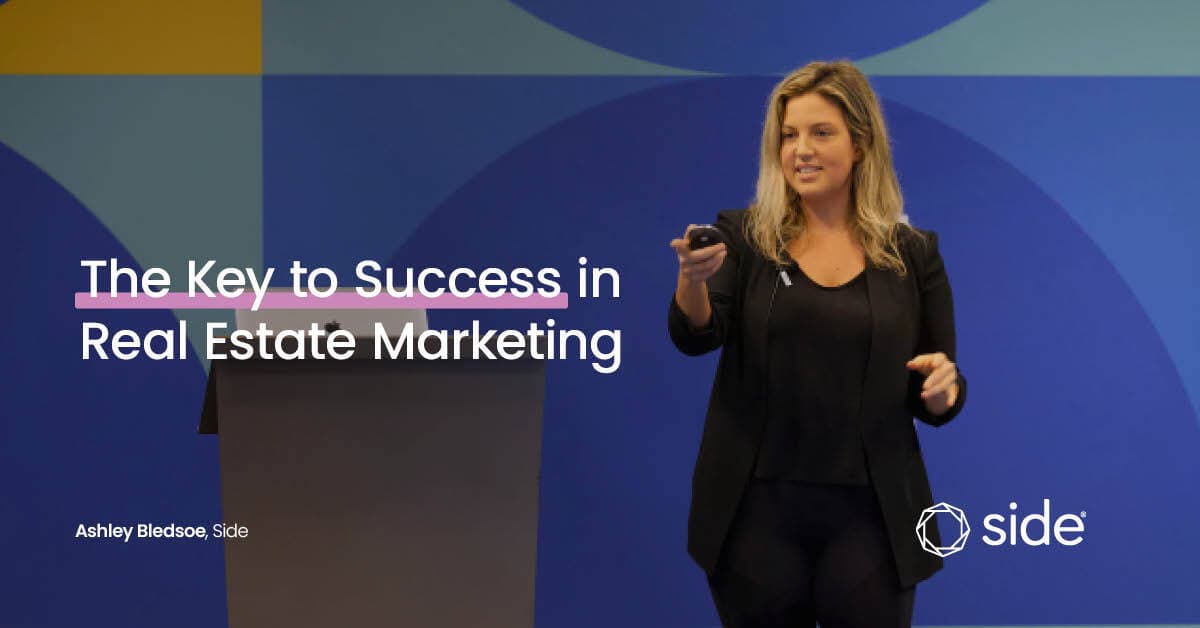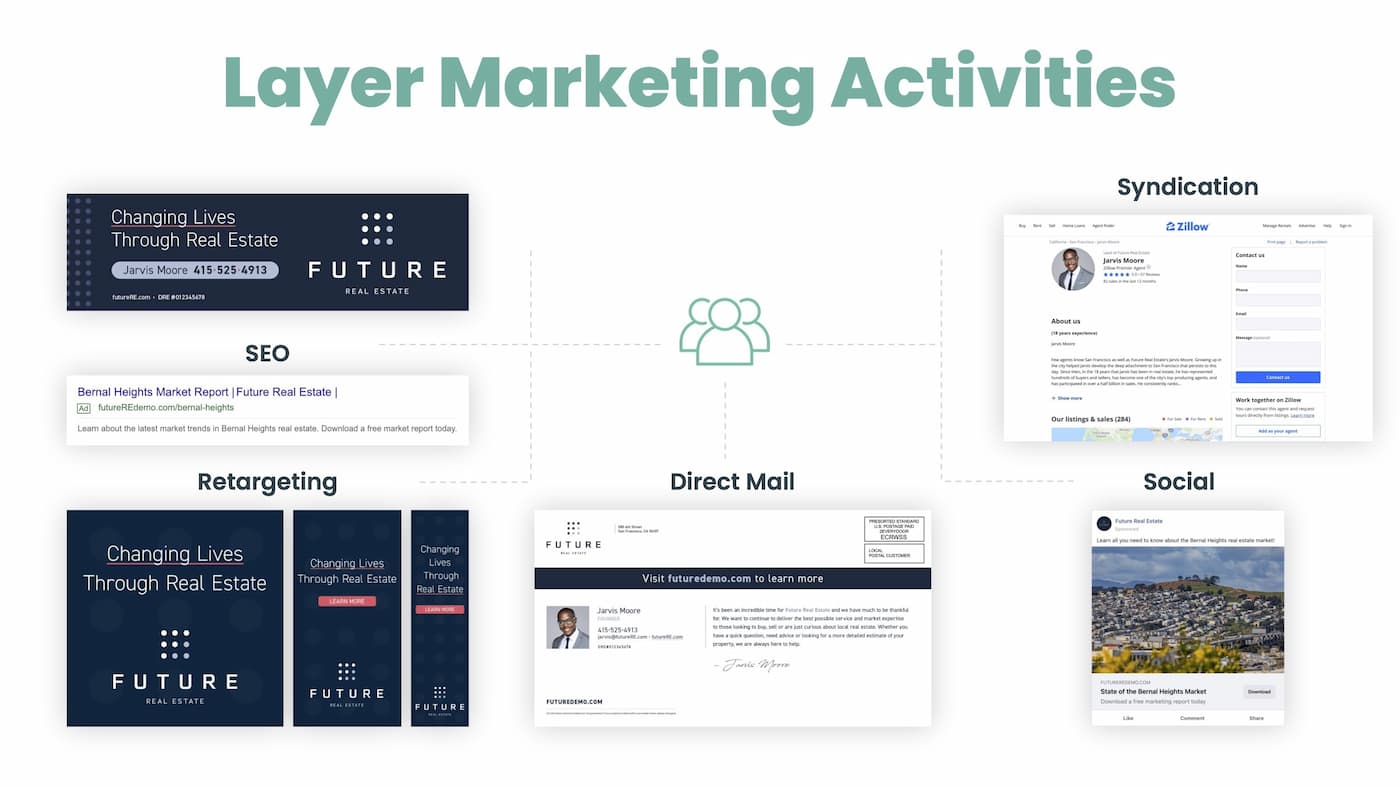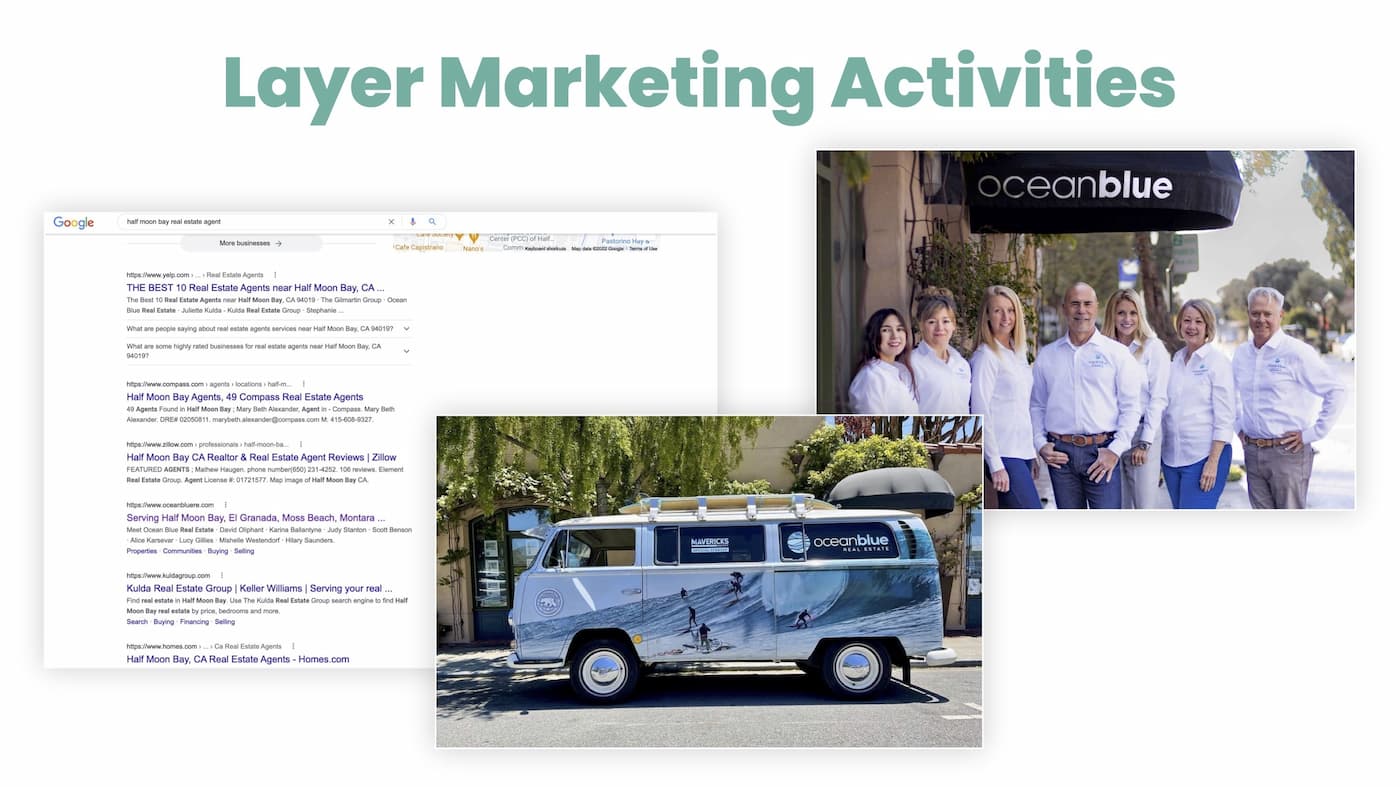
Too many people think the goal of marketing is to go viral.
They switch up strategies constantly, desperate to put out a post that cuts through all the noise and attracts hundreds of thousands of viewers.
Ashley Bledsoe, who has advised hundreds of market-leading boutique companies in her role as director of marketing at Side, strongly disagrees.
“What I’ve learned in my 13 years in real estate marketing is that the attention-grabbing marketing you’re looking for almost never comes from a single moment,” said Ashley. “When you actually peel back the onion, what you’ll find is years and years of hard work.”
“What I’ve learned in my 13 years in real estate marketing is that the attention-grabbing marketing you’re looking for almost never comes from a single moment. When you actually peel back the onion, what you’ll find is years and years of hard work.”
– Ashley Bledsoe, director of marketing at Side
Ultimately, if you want to grow your business through marketing, virality is nowhere near as important as consistency. Having a thoughtful strategy that you execute on every single day will help you build an audience far more reliably than chasing whatever new trend you hope will get you to go viral.
In a session at the California Association of REALTORS®’ REimagine! Conference, Ashley broke down what you should be focusing on to make sure you achieve consistent marketing that drives results.
Here are her tips:
1. Tie your marketing to your broader business objectives
You should be able to directly tie each marketing effort you undertake to a strategic business goal.
Which means if you don’t have clear, measurable goals set for your business, that’s your first step — don’t wade into marketing until you have a business plan in place.
Ask yourself: What’s your main goal for your business in the coming year? Do you want to grow your market share? Expand into a new territory? Add more agents to your team? Keep it specific and focused.
Then, every time you’re considering a new marketing strategy, ask yourself: How will this help me achieve my main goal for my business?
There’s always some new marketing tactic or channel to explore, and it’s all too easy to get distracted by shiny bright object syndrome and pour resources into marketing that doesn’t move the needle. Keeping focused on your primary business objective will help you cut out the noise.
As Ashley said: “In marketing, there’s no shortage of great ideas. But not every great idea will be right for right now.”
“In marketing, there’s no shortage of great ideas. But not every great idea will be right for right now.”
– Ashley Bledsoe, director of marketing at Side
For example, Anna Bellomo has had a clear objective for her company, District Homes, since the day she founded it in 2017: to be the number-one real estate company in Berkeley, California. While she’s had opportunities to expand beyond Berkeley, she’s never taken them — her primary business goal is centered in dominating the Berkeley market.

And that goal is reflected in each and every piece of her marketing. Her collateral mentions Berkeley prominently, she places ads in well-read Berkeley publications, and she sends frequent mailers to Berkeley residents only.
Her focus has paid off — after just four years in business, District Homes has become the highest-volume small real estate company in Berkeley.
2. Layer your marketing activities
How often do you see an advertisement from a brand-new-to-you company, click the link, and immediately make a purchase?
Chances are, it’s rarely — even more so when that purchase costs hundreds of thousands of dollars.
On average, it takes eight touchpoints before someone is ready to make a purchase. If a prospect reaches out to you because they’re interested in working with you, it’s very likely they have already been engaging with your brand in multiple ways — and probably for longer than you realize.
That’s why you can’t expect one single piece of marketing to sway your prospects. You have to layer various different tactics so you can ensure you’re supplying multiple touchpoints.

Some of those tactics include:
- Search engine optimization (SEO): Take steps to ensure your website pops up when prospects search for certain keywords.
- Retargeting: When someone visits your website, they will continue to see your ads pop up as they visit other ad-enabled sites.
- Direct mail: Send physical postcards or pamphlets directly to prospects’ homes.
- Social media: Make use of paid ads on social media to ensure prospects see your posts pop up in their feeds.
- Syndication: Make sure that you and your listings show up on websites prospects may visit to learn more about real estate (e.g., Zillow, Yelp, etc.)
Ashley strongly believes that success comes from combining multiple tactics. “I’m a huge proponent of direct-mail farming, personally — I’ve seen substantial businesses be built from it. But I also know that in the digital age, one touchpoint isn’t enough. You have to show up in their mailbox and in their social feeds.”
David Oliphant, founder of Ocean Blue Real Estate in Half Moon Bay, California, has had great success with layering. His goal has been to be the go-to agent in Half Moon Bay, and in pursuit of that goal, he has focused on creating web content such that he organically ranks for the search term “Half Moon Bay real estate agent.”

He supplements his searchability with a physical storefront in downtown Half Moon Bay as well as a VW van, a longstanding fixture of his business, wrapped in his company’s logo. When local residents search for “Half Moon Bay real estate agent” and see Ocean Blue Real Estate pop up, chances are they’ve already seen his van around town.
3. Quantify your efforts
Consistency only works if you take the time to check in and make sure you’re getting results. You don’t want to be consistent for a year on a platform your target consumer never touches.
“You have to understand your return on investment,” said Ashley. “And that doesn’t have to be money — your time is also an investment. And your goal doesn’t have to be transactions completed, it could be new appointments booked or new people added to your CRM. Figure out what’s the most important step in moving the needle for your business.”
Make sure you are able to evaluate the return on investment (ROI) for each of your marketing efforts.
For instance, if you’re using a direct-mail campaign, consider adding call tracking. Put a phone number on the mailers that’s not your actual phone number, but still forwards to your actual phone number. That way, you can track how many calls came directly from your mailers, and you’ll know whether the thousands of mailers you’re sending are actually moving the needle.
Shalini Sadda quickly embraced tracking and quantifying her marketing efforts when she joined City Real Estate. Because she was regularly checking in on her marketing’s ROI, she confidently continued to invest in marketing at the start of the pandemic, when many other agents paused their spends.

Shailini strategically focused on luxury condo buildings, which were particularly difficult to move during the pandemic, and after just two and a half years, she sold a condo penthouse for $11.15 million.
4. Don’t give up too quick!
Too many agents start a new marketing strategy, wait two weeks, then decide it’s not working.
If they haven’t tied that strategy into broader business objectives, or layered with other marketing activities, or quantified their results — then yes, the new strategy isn’t worth their time.
But if you’re clear on your goal, you’re focused on multiple touchpoints, and you know how to track your results, you just have to be patient.
“Stay committed,” said Ashley. “Plan to take a step back every once in a while, maybe on a quarterly basis, to evaluate if you’re seeing the results you want.”
But don’t get discouraged after just a few weeks. Marketing is a long game, and hopping from one strategy to the next won’t net you anywhere near the results of staying calm and consistent.
